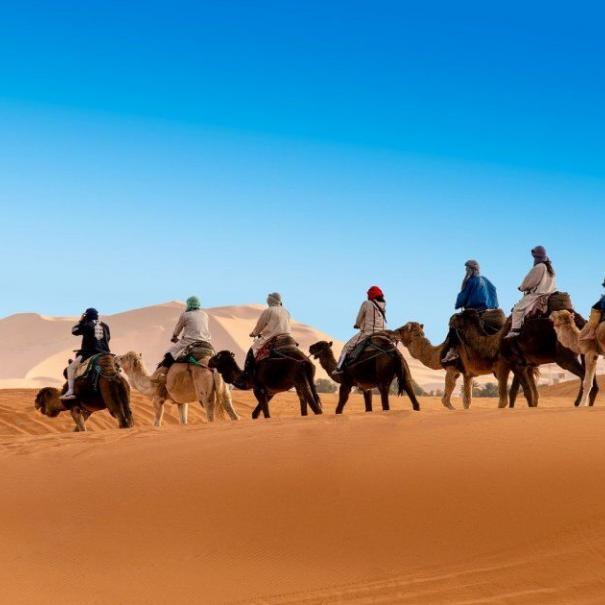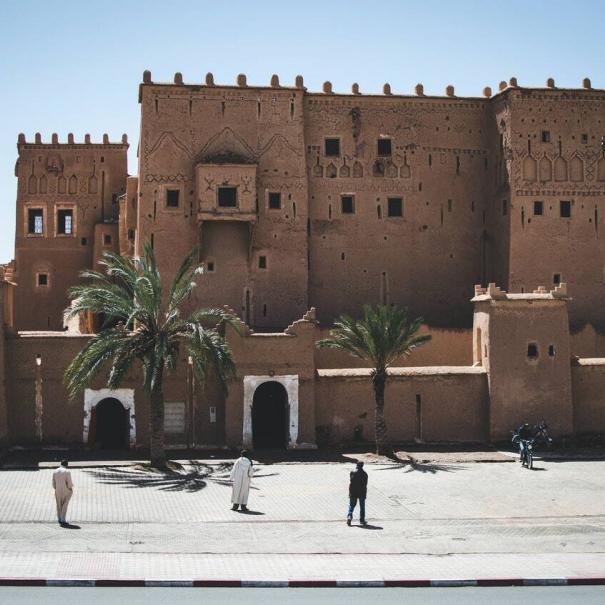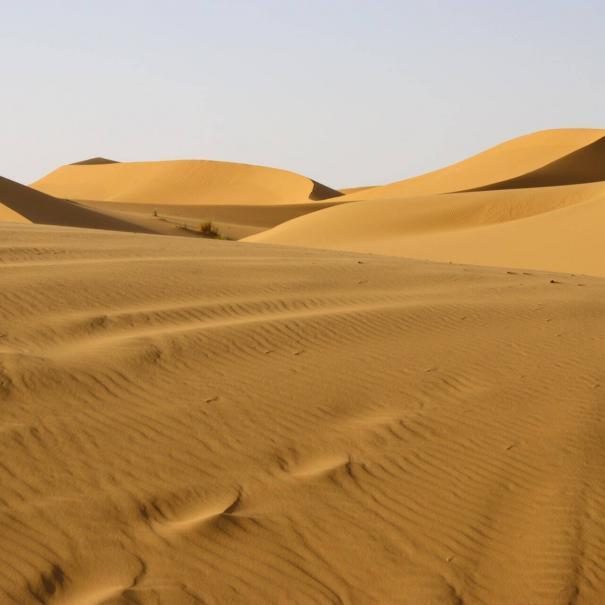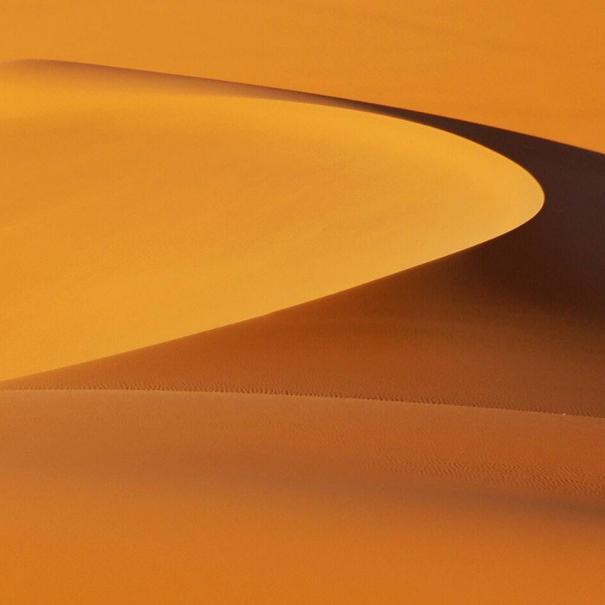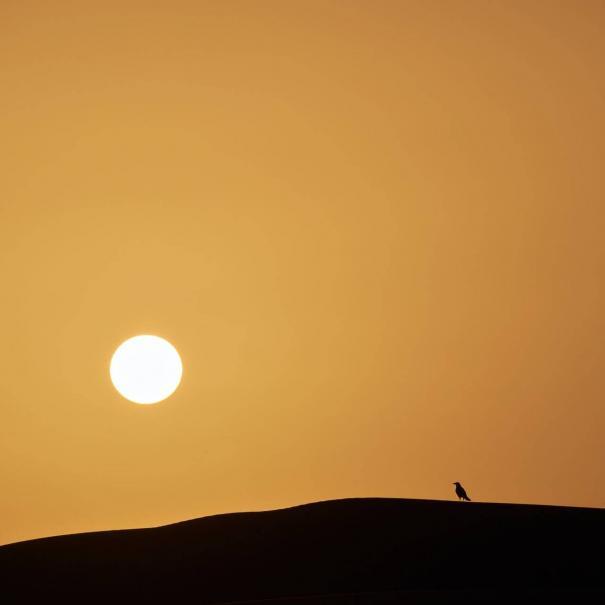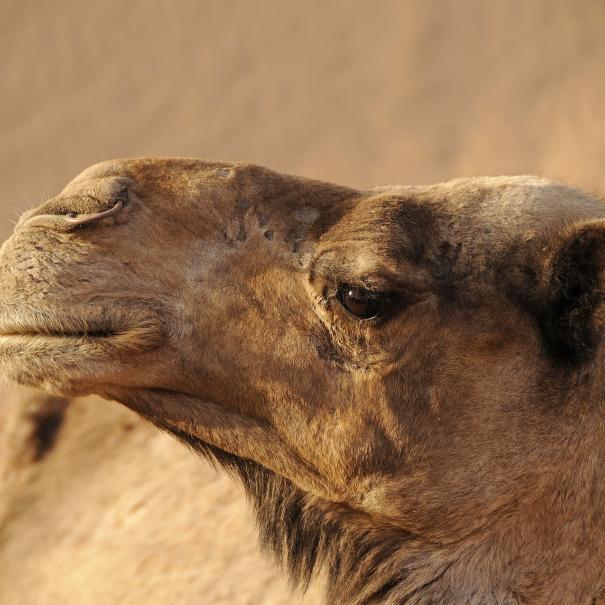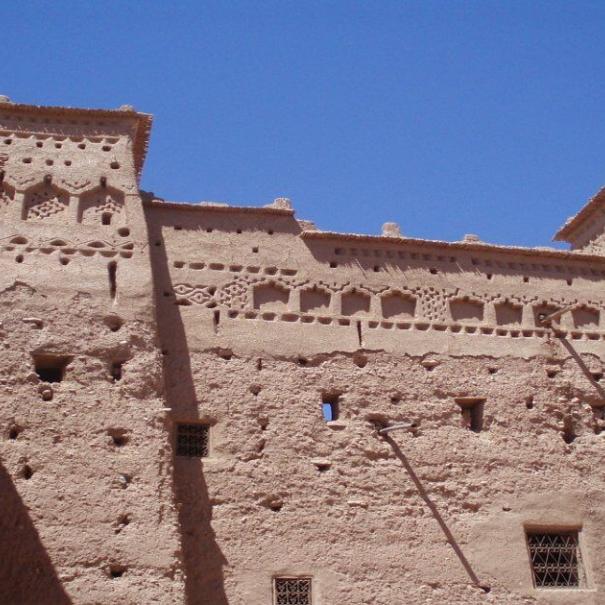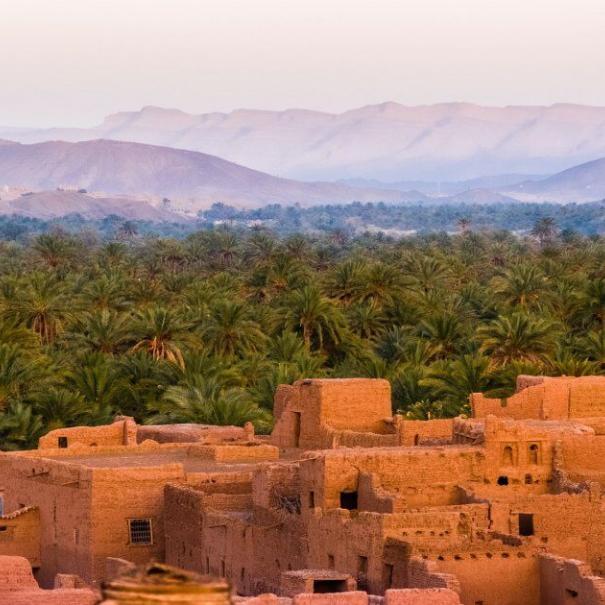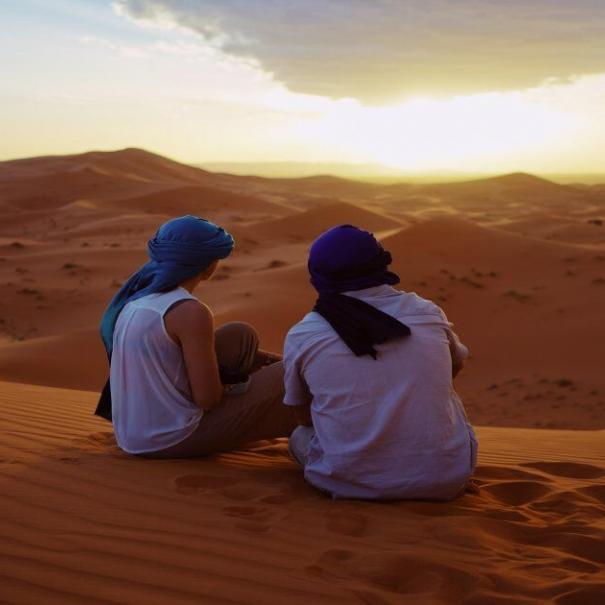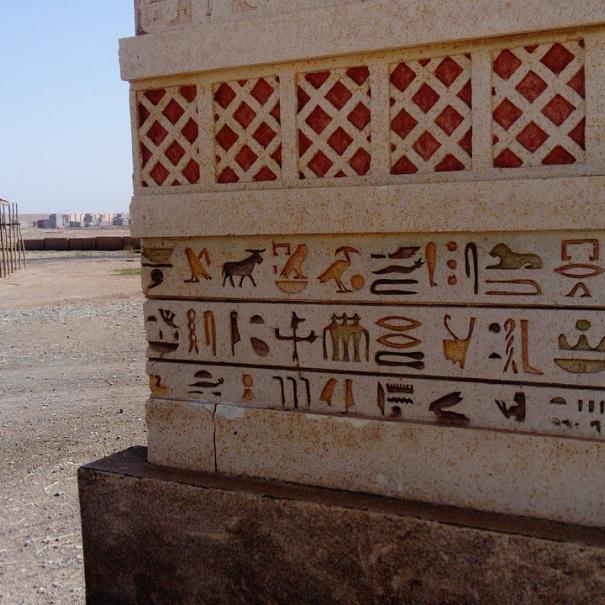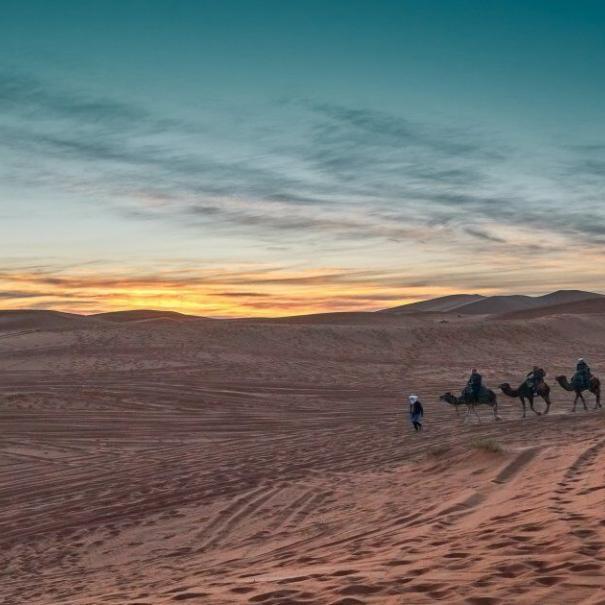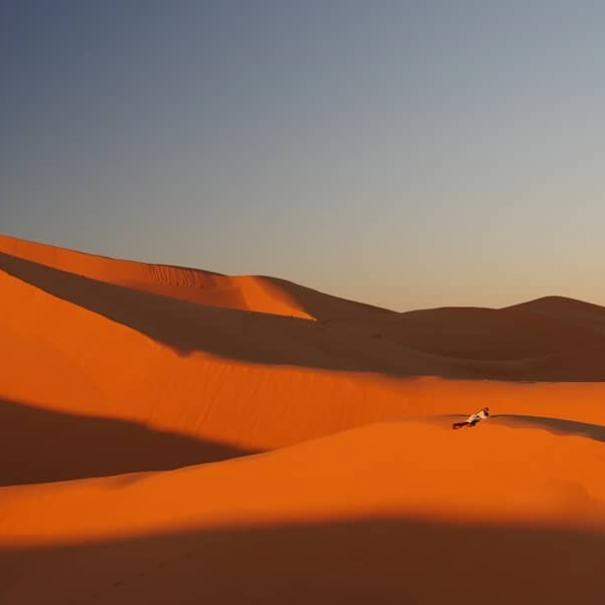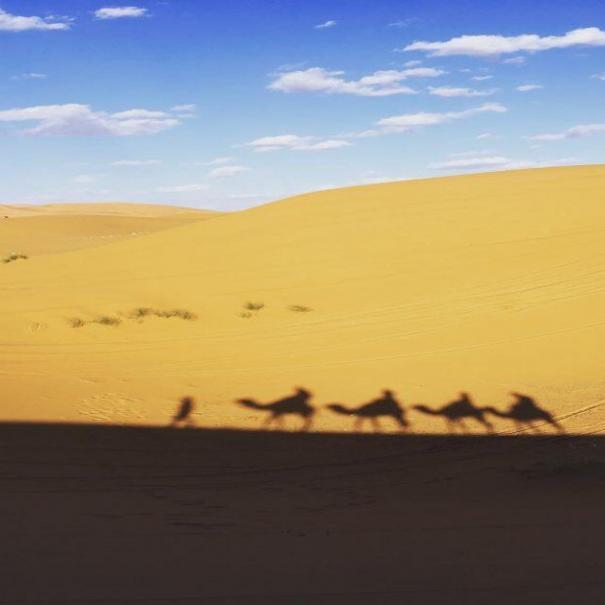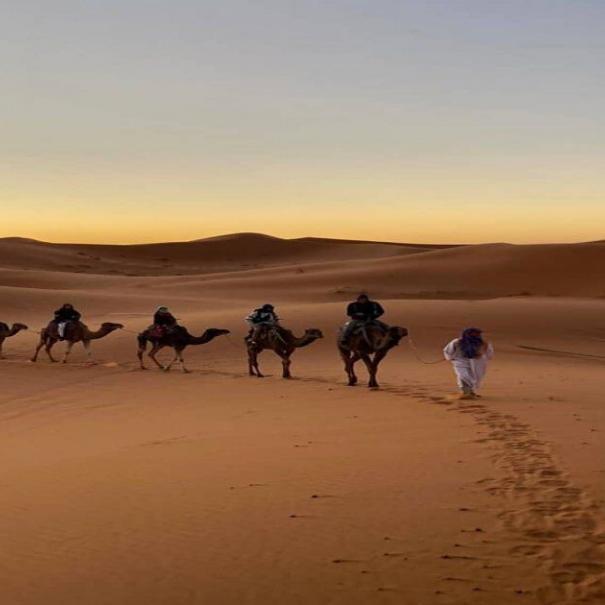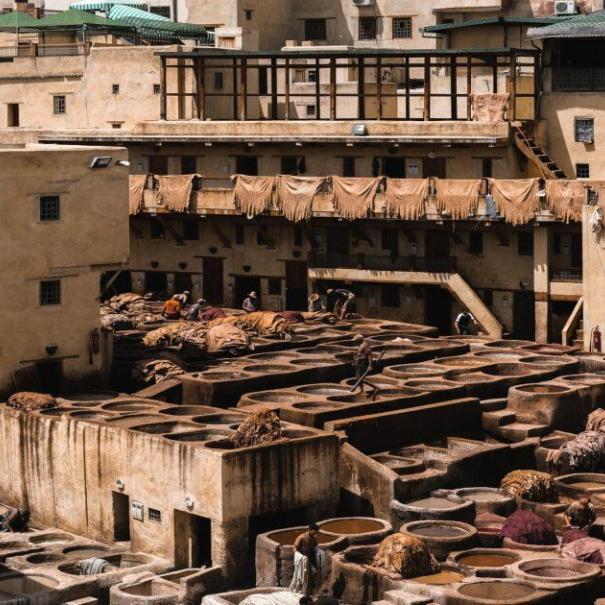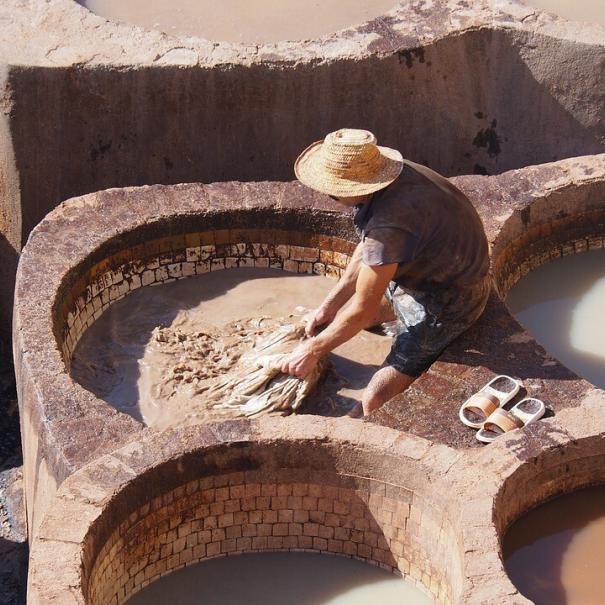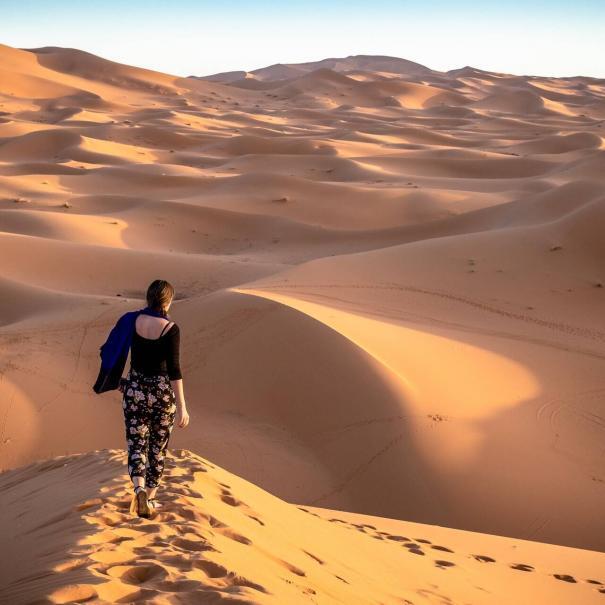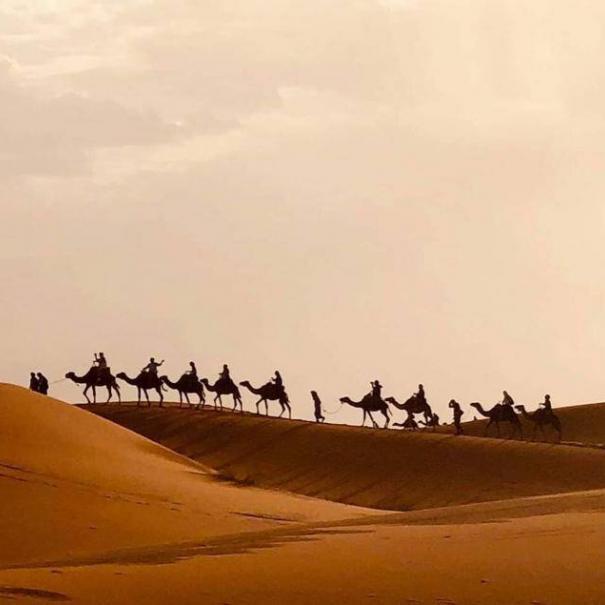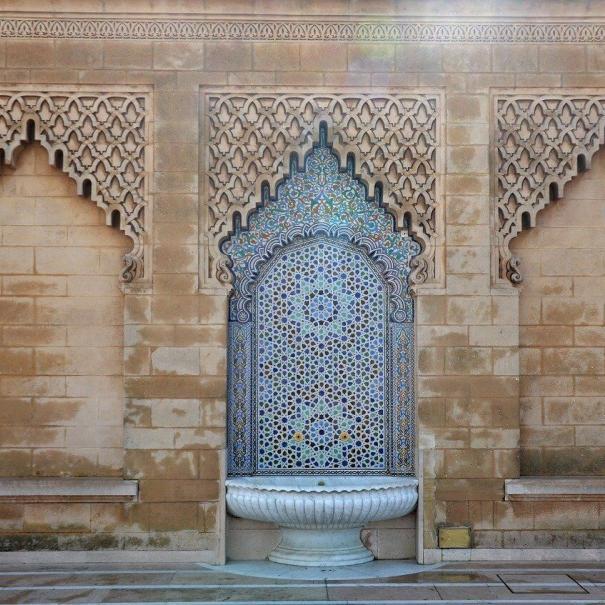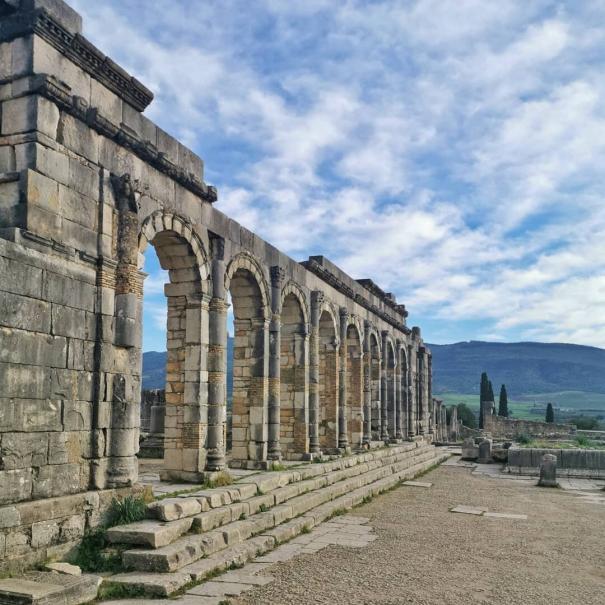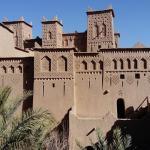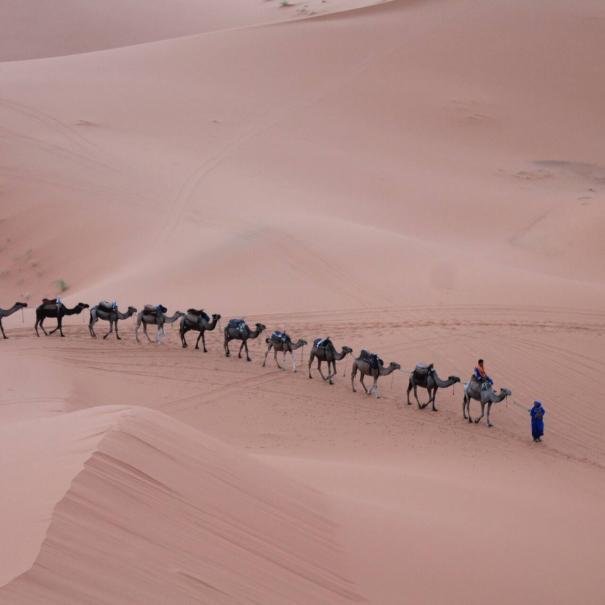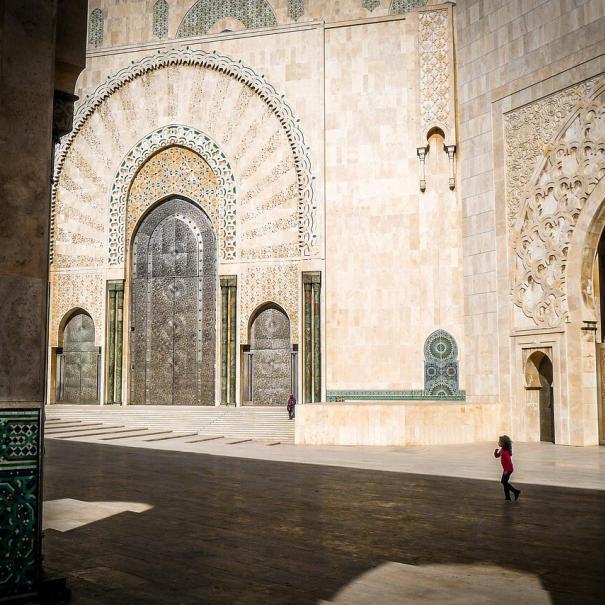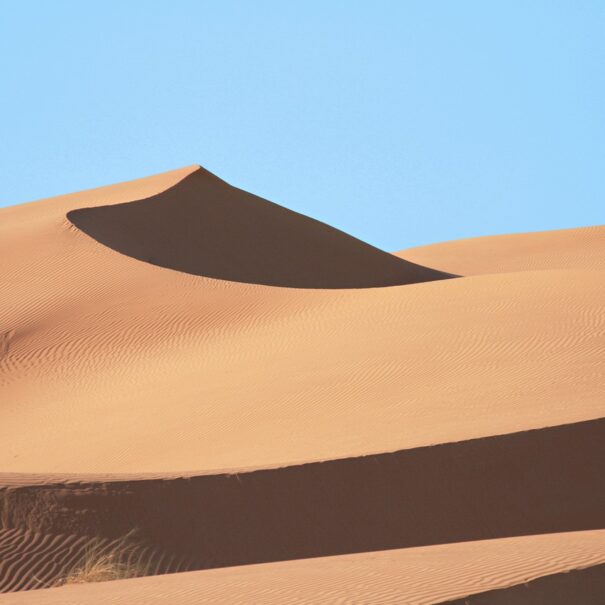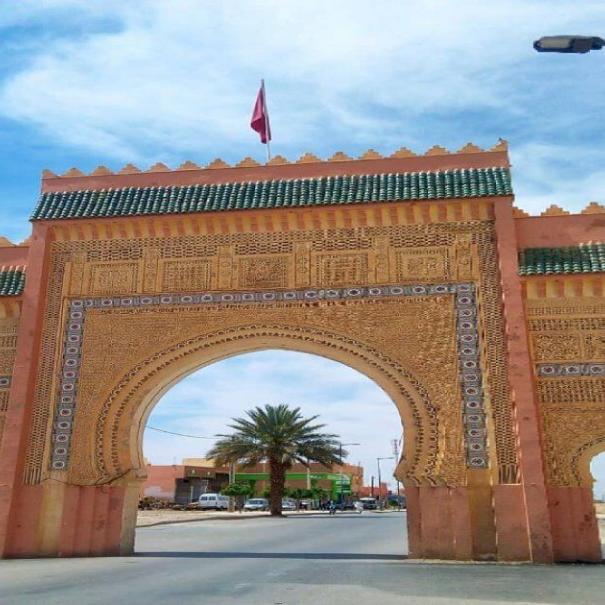Hassan II mosque :
Casablanca was only a Berber colony. The name of the city comes from the Spanish translation of the name “White House”, given to the city by local residents. The most impressive building in the city is the huge Hassan II Mosque. Built on the edge of the ocean, it looks like a majestic ship. In the entire Islamic world, the Hassan II Mosque has no equal in terms of height and splendor of interior decoration. It features the works of Morocco’s most skilled craftsmen: frescoes, mosaics, wood carving and painting, and Arabic writing.
The prayer room has a beautiful decoration with 78 columns of pink granite. Also, golden marble tiles and green onyx cover the floors. Moreover, the room is lit by 50-ton Venetian glass chandeliers. Additionally, the room can accommodate 20,000 worshippers and another 80,000 on the esplanade. The minaret rises 200 meters above sea level. A laser beam, beating from the top of the minaret for 30 km, indicates the direction of Mecca. Furthermore, the mosque is an Islamic cultural center with its own madrasah, library, and museum. The French architect Michel Pinseau designed the mosque and opened it in 1993. It is one of the few mosques where non-Muslims have the possibility to enter at certain hours. It only costs about $10.
After seeing the main attraction of the city, don’t forget to visit the church of Our Lady of Lourdes, the Museum of Islamic Art, Mahama do Pasha.
Casablanca today is the economic, financial, and industrial capital of the Kingdom of Morocco. Located on the Atlantic coast, in the south of Rabat. It is a city with skyscrapers and the Hassan II Mosque, which can accommodate 25,000 people for prayer at the same time, plus another 80,000 on the square near the mosque.
Mohammed V airport :
The ultra-modern Mohammed V airport is like a mirror of the city: modern technology and traditional style coexist here. At the beginning of the 20th century, a development plan for the city was adopted, limiting its expansion in width. As a result, large buildings began to appear. Now the center of Casablanca is a set of streets scattered along the sides, built with modern buildings. Nevertheless, stand out for their originality and national flavor. The population of the city is more than 3.5 million people.
Casablanca’s port and attractions :
As Casablanca did not have a natural port, a 3-kilometer marina was built here. Casablanca has the largest port in the Atlantic and represents the intersection of the most important roads in Europe, Africa, and America. The local port is the fourth largest in Africa. Not to mention, you can swim on the beach of the city of Casablanca, but Agadir is more suited for a beach vacation. The beaches are artificial, but the quality is not inferior to natural beaches.
The Corniche neighborhood is the center of Casablanca’s nightlife. Here, you can walk slowly along the sea, sit in open restaurants, visit bars, discos, and nightclubs.
The city has not lost its national identity, remaining a monument to its country’s eventful history.
The old medina of Casablanca is a labyrinth of narrow streets, an endless market where you can buy absolutely everything.
To sum up, this city is ideal for organizing various conferences, seminars and business meetings. Many hotels have conference rooms, equipped meeting rooms, the hotels have a rich experience in organizing such events.
